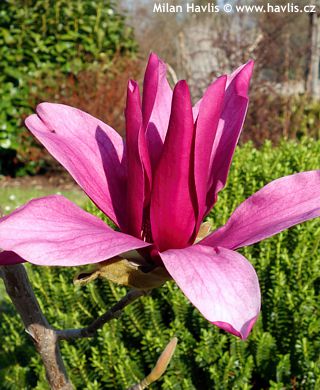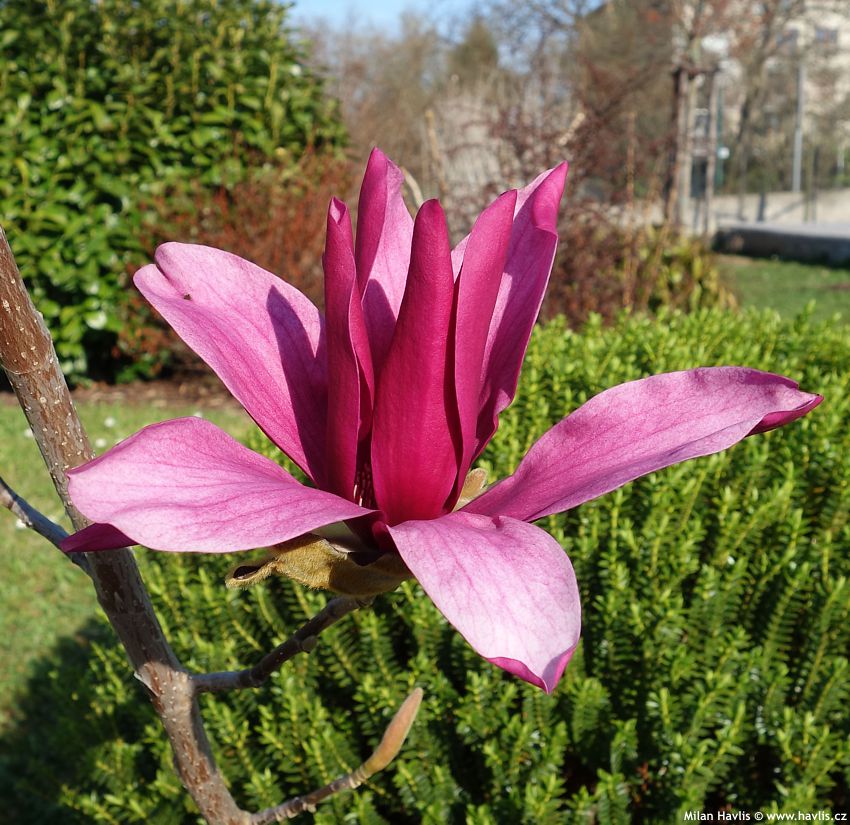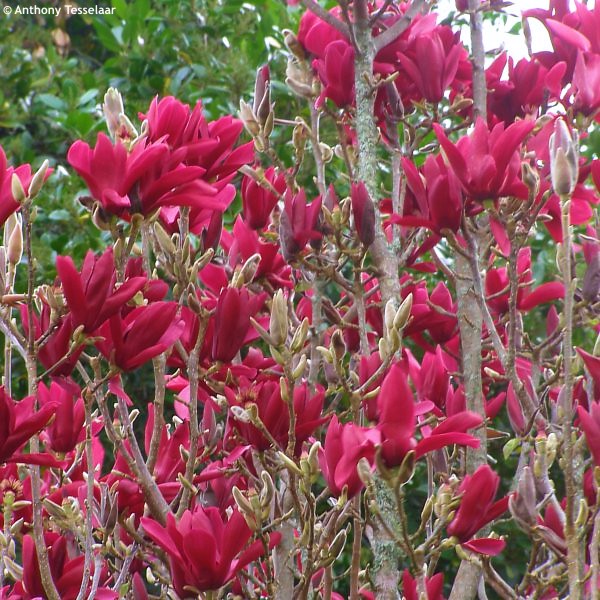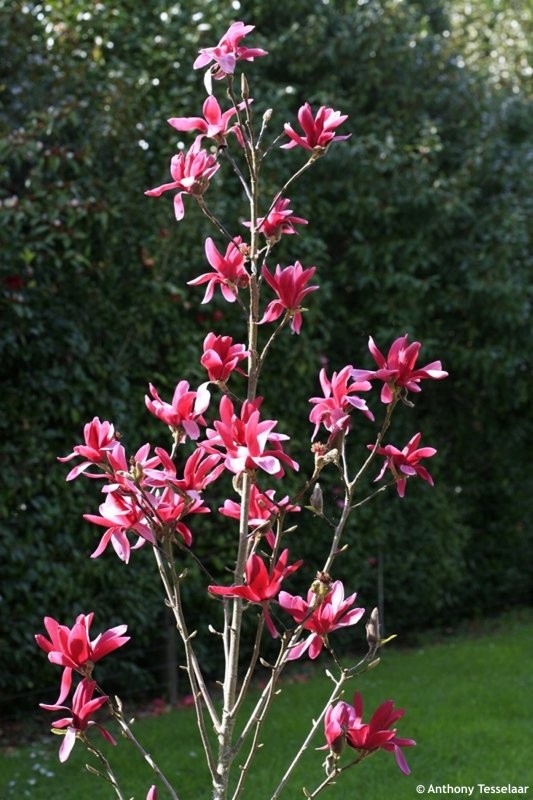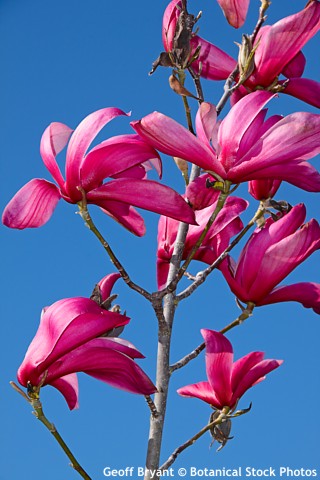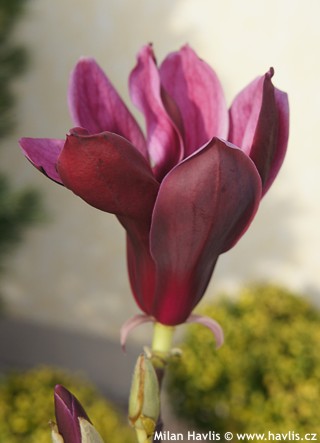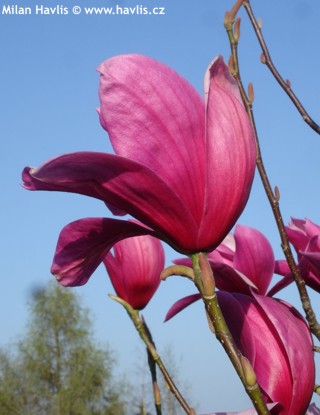Magnolia ('Jurmag4') BURGUNDY STAR™ magnolia
Burgundy Star™ magnolia is another success by Mark Jury, son of Felix Jury, renowned for the famous New Zealand based 'magnolia breeding factory'. This jewel is a cross between large-flowered Vulcan and liliiflora Nigra. Cross pollination was done in 1993, and first flowers appeared in 2002 when the winning specimen was selected among 15 other plants. It was patented under Jurmag4 PP20346 in 2008 .
Burgundy Star™ magnolia is one the good reds. It shows a rich but not so deep burgundy red colour, rather brilliant and extravagant claret red, not a dark, staid, wine red. Same colour outside and inside the flower, fading to lighter, almost pink.Flower petals are elongated as in star magnolias but firmer and larger, inflorescence measuring up to 20 cm. Another interesting feature about Burgundy Spire™ magnolia is its columnar, almost fastigiate habit. It is quite narrow for a magnolia, not exceeding some 2m wide, and reaching between 3 and 4m tall in Central European climate. Leaves are deciduous, narrowly obovate, mid green, with no significant autumn colour.
Magnolias are not supposed to be pruned. You can prune old shrubs if ill, or trim them to shape or to reduce size, or make an elementary cut to young plants of unsightly or unhealthy appearance. Do this as soon as possible after flowering to secure setting of flower buds for the following year. Be aware that each magnolia can respond differently to pruning.
Deciduous magnolias are quite easy plants. All they need is light, well-drained, acidic soil with equal moisture throughout the year. Once established they can do with occasional drought but will not look as nice as the ones with regular watering. Just pay attention to how to plant your magnolia. First, find it a spot where it will live forever and ever. It does not like transplanting. As it makes shallow roots reaching well over its spread stay away from disturbing the roots by digging or messing about around it. Just cover the soil with bark mulch and do not plant anything else near it after say the second year after planting onwards. You could damage the very important top roots that absorb maximum moisture and nutrients from the soil. Also avoid planting magnolia too deep. Thus you could be digging its grave. Burgundy Star™ magnolia has proved hardy down to -29°C (USDA zone 5), and according to its patent it should survive even down to zone 3 which equals -40°C (we have not had a chance to test that).
Last update 01-02-2016

































